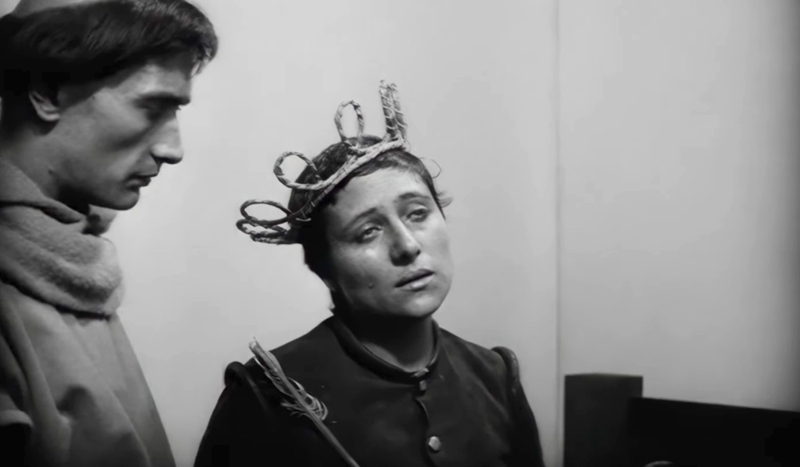
The Passion of Joan of Arc video screengrab
A silent film from the 1920s about the trial of St. Joan of Arc “is both a giant artistic accomplishment and a spiritual insight into how God’s miraculous supervision of his Church operates,” wrote Catholic journalist Robert Brennan May 29 for Angelus News.
The 1928 film The Passion of Joan of Arc was released just eight years after the Church canonized St. Joan of Arc. The French Film Society commissioned Danish movie director Carl Theodor Dreyer to create a film about the saint as her popularity surged.
“Dreyer was given the artistic freedom to interpret the ‘passion’ of the saint as he wished,” Brennan wrote. “What resulted is a film that still resonates 97 years later.”
The film was also controversial, Brennan continued, as Church leaders did not want to reexamine Joan’s trial. As a result, the film was cut and edited many times against Dreyer’s wishes. The original director’s cut was eventually discovered in a mental hospital near Oslo.
The film, however, does not include any poetic plot twists, or even Joan’s pastoral youth and backstory; instead, it focuses entirely on her trial.
Brennan praised the casting, set, and camera angles, which all contributed to depicting the agonizing trial of Joan that eventually led to her martyrdom. He wrote that the opening of the film is jolting, even for modern, jaded audience members.
“It is a film that unfolds in a series of high-intensity close-ups, crooked camera angles, and a concrete set,” he wrote, “giving a nightmarish version of a medieval bastion to accompany the nightmare scenario playing out in the life of St. Joan.”
Brennan wrote that for a long time, he was troubled by how the Church could both be responsible for killing Joan, and for elevating her to sanctity.
“How could the Church condemn a woman and then make her a saint? The answer came to me as I got a little wiser. The Church is made up of human beings, and that alone is all you need to have a moral debacle,” he wrote. “But it is that same Church, through God’s grace and patience, that can set things straight. Even though the trial of Joan of Arc was not the Church’s high-water mark, she still preserved the minutes of the trial for the centuries that followed.”
Despite the persecution and errors of the French bishops, God was preserving Joan’s cause.
Brennan concluded that The Passion of Joan of Arc is both a giant artistic accomplishment and a spiritual insight into how God’s miraculous supervision of his Church operates. We may not understand it; we may question how the same Church that condemned Joan elevated her to sainthood. But we can marvel at God’s handiwork, the trial transcript the film so honestly sheds light on, and the knowledge that despite our flaws and our sins, God never abandons his followers, or his Church.”

